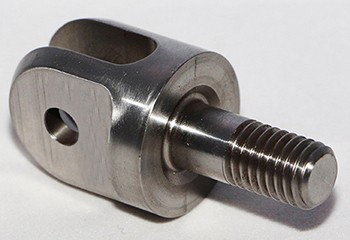Thread Rolling
Thread rolling is a vastly different process to any other type of threading – rather than cutting and grinding the material the thread is formed using cool forging, much like knurling. Thread rolling is the best way to produce the strongest, most precise threads when machining any ductile metal.
The thread is strong because rather than cutting through the material grain, you form the material into a threaded shape using dies. This means the thread can withstand far great amounts of stress than thread created under any other machine process. Also, as the threads are formed this way, they have an excellent surface finish, making them perfect for machinery assembles where the thread mates with female components. With the seamless finish and strength which thread rolling offers, it is a vital process in the creation of any aircraft.
Ford undertakes all thread rolling procedures in accordance with WHPS 390 standards, thread rolling with cut and ground precision blanks, with a surface finish between 4µ and 5µ. Ford Engineering is capable of left and right hand threads from a range of materials include steel, stainless steel and titanium, with sizes ranging from Metric M4 to M30, up to 250 mm long.
All of our components created using thread rolling are inspected in-house to ensure that the thread is correctly formed without any defects being present. Using metallurgical examination techniques Ford Engineering places a specially treated sample part under a microscope and due to the process the part undertakes, the inspector can see the individual grains which run through the components thread, checking that it conforms to the specification.



